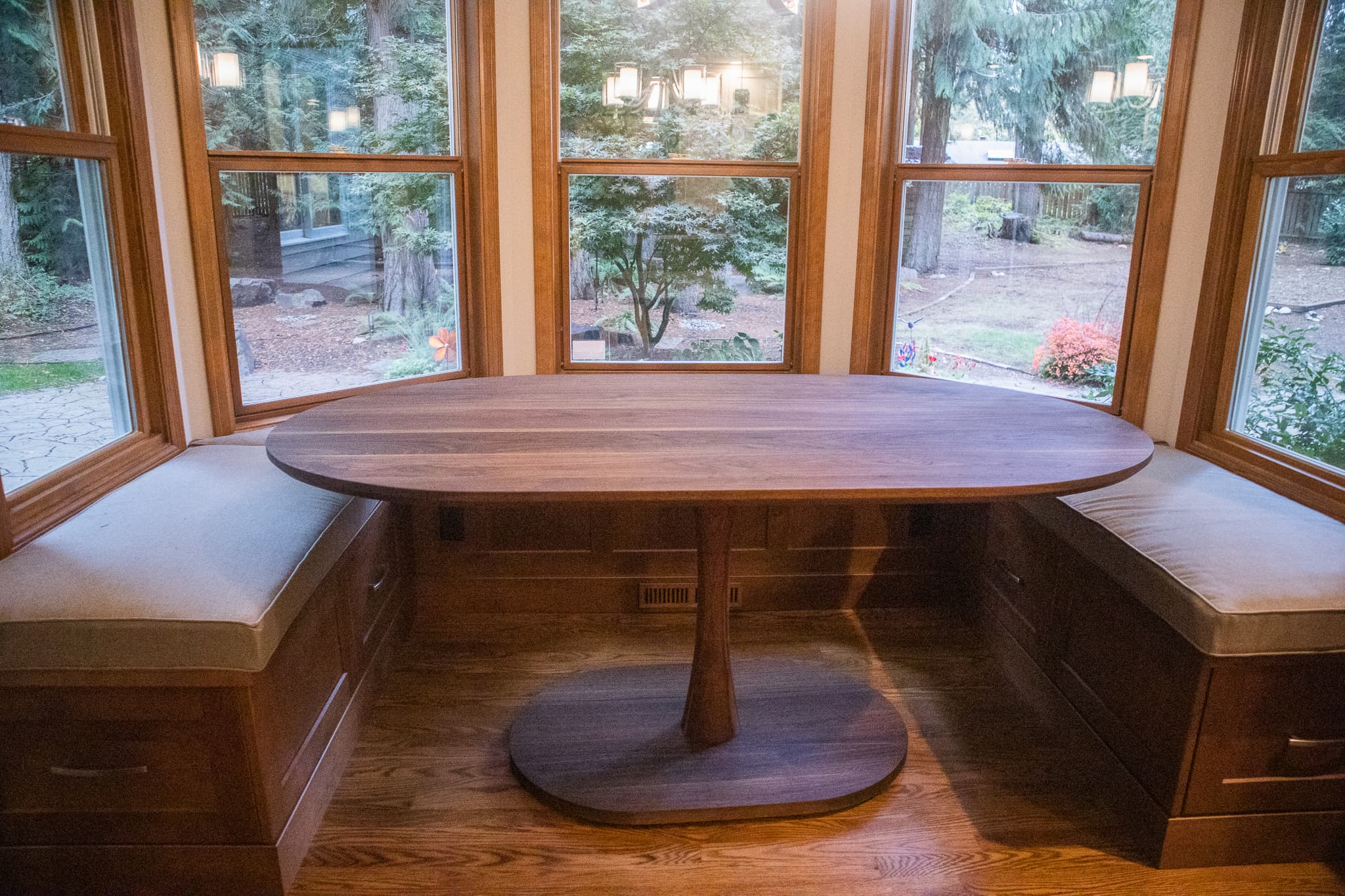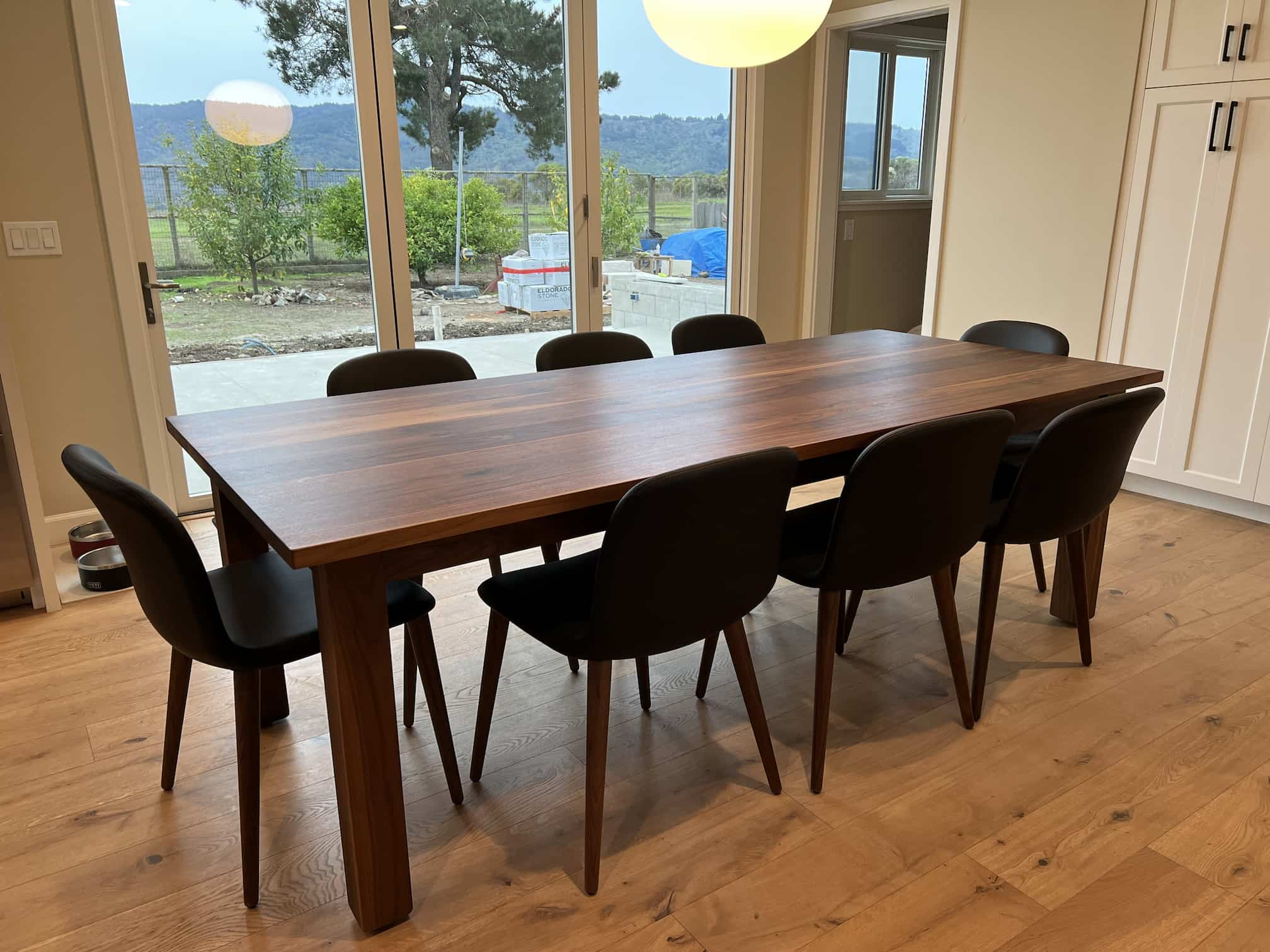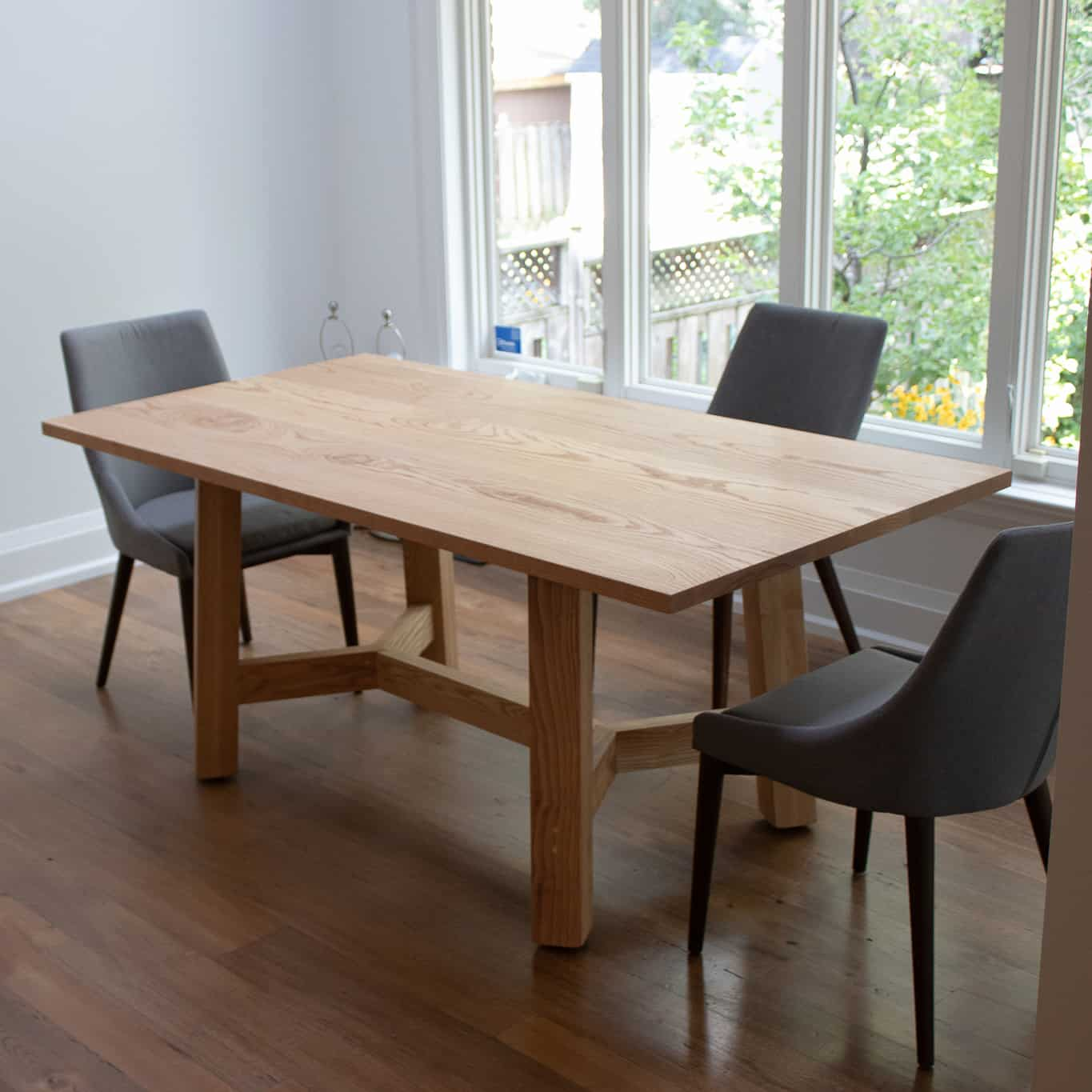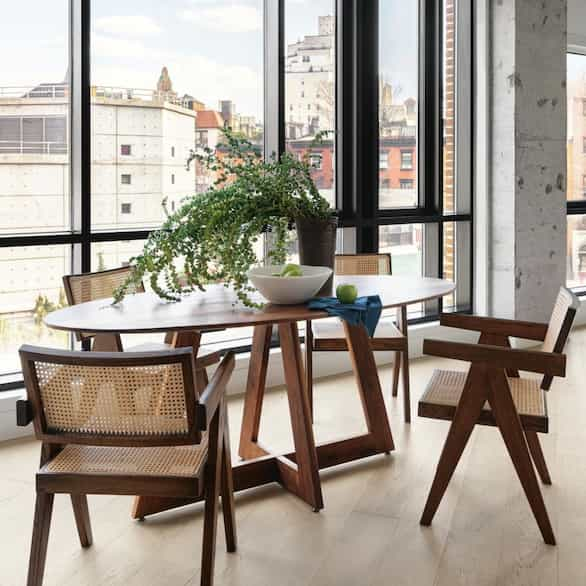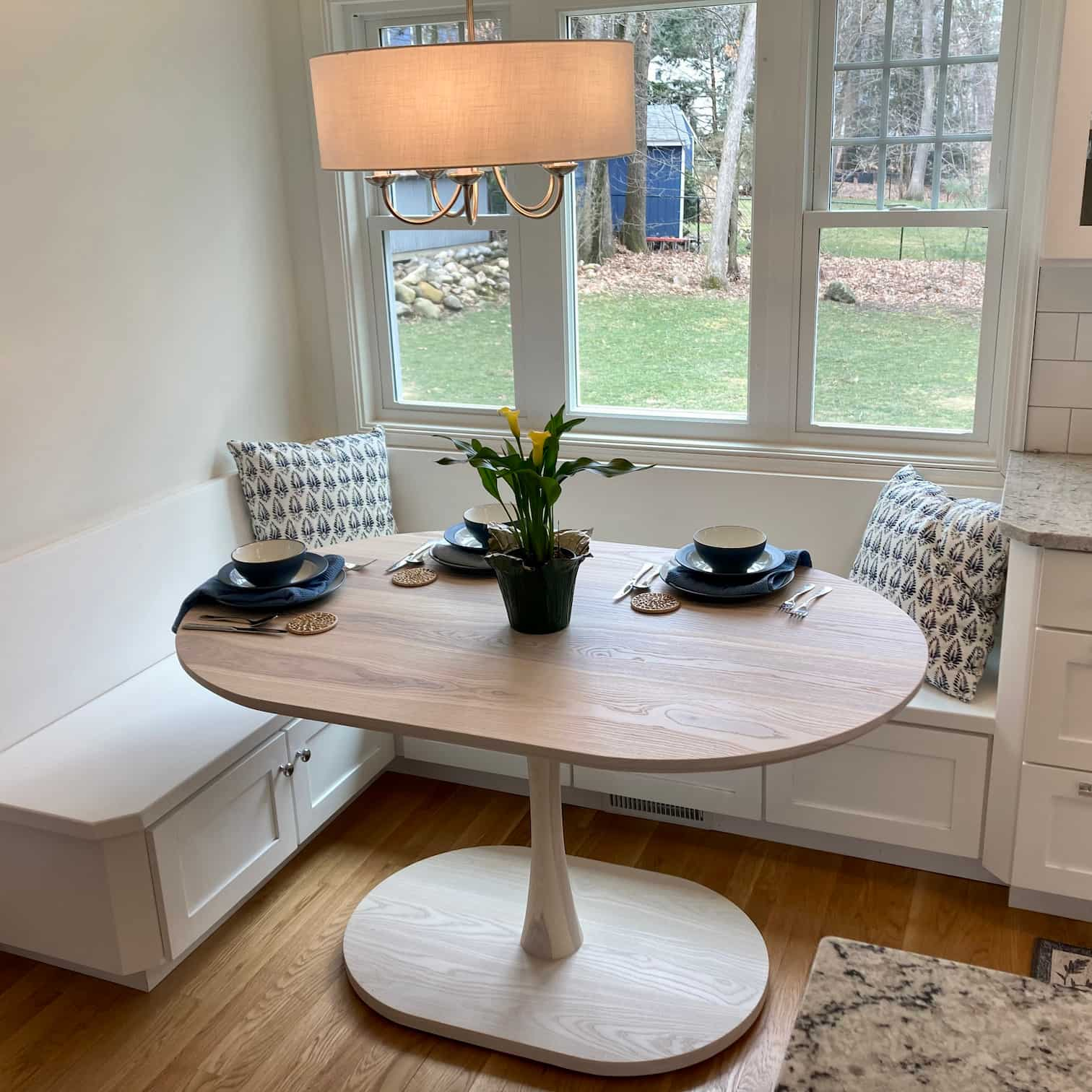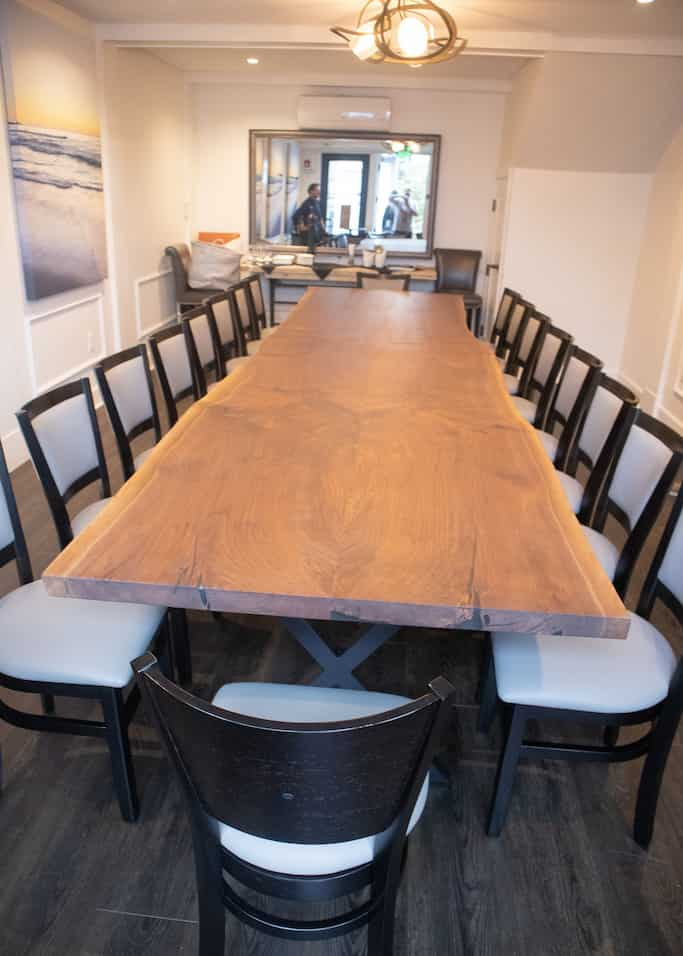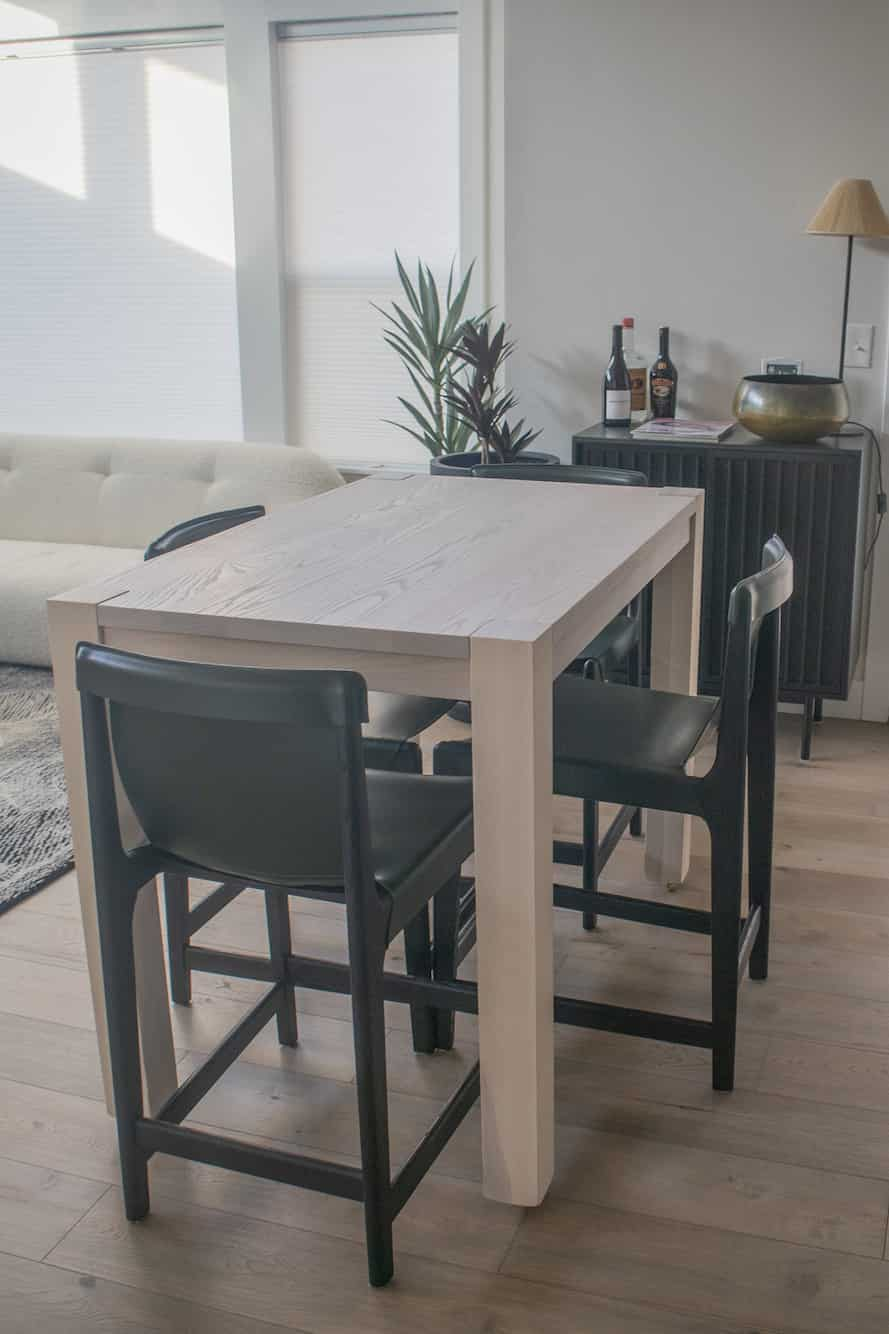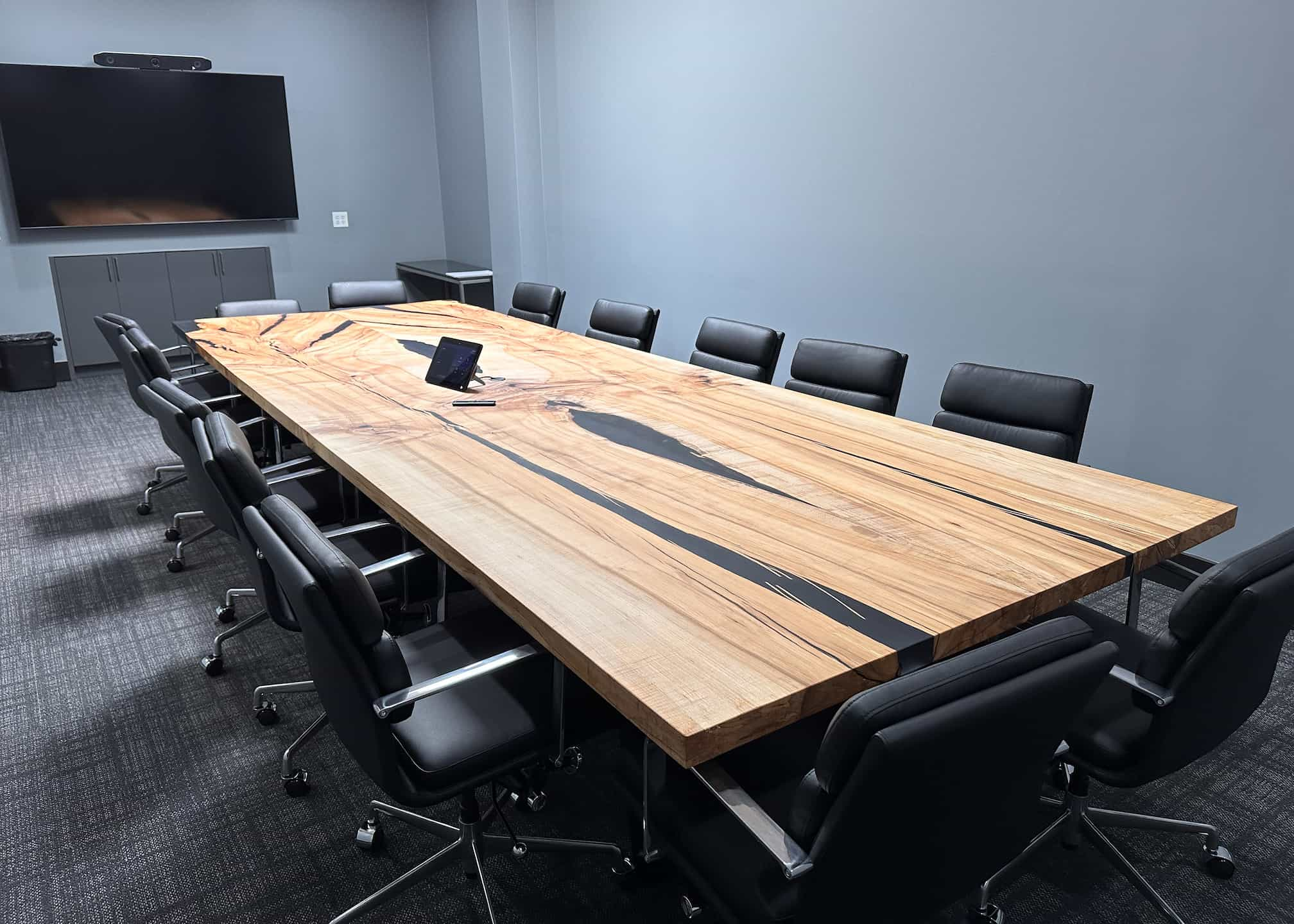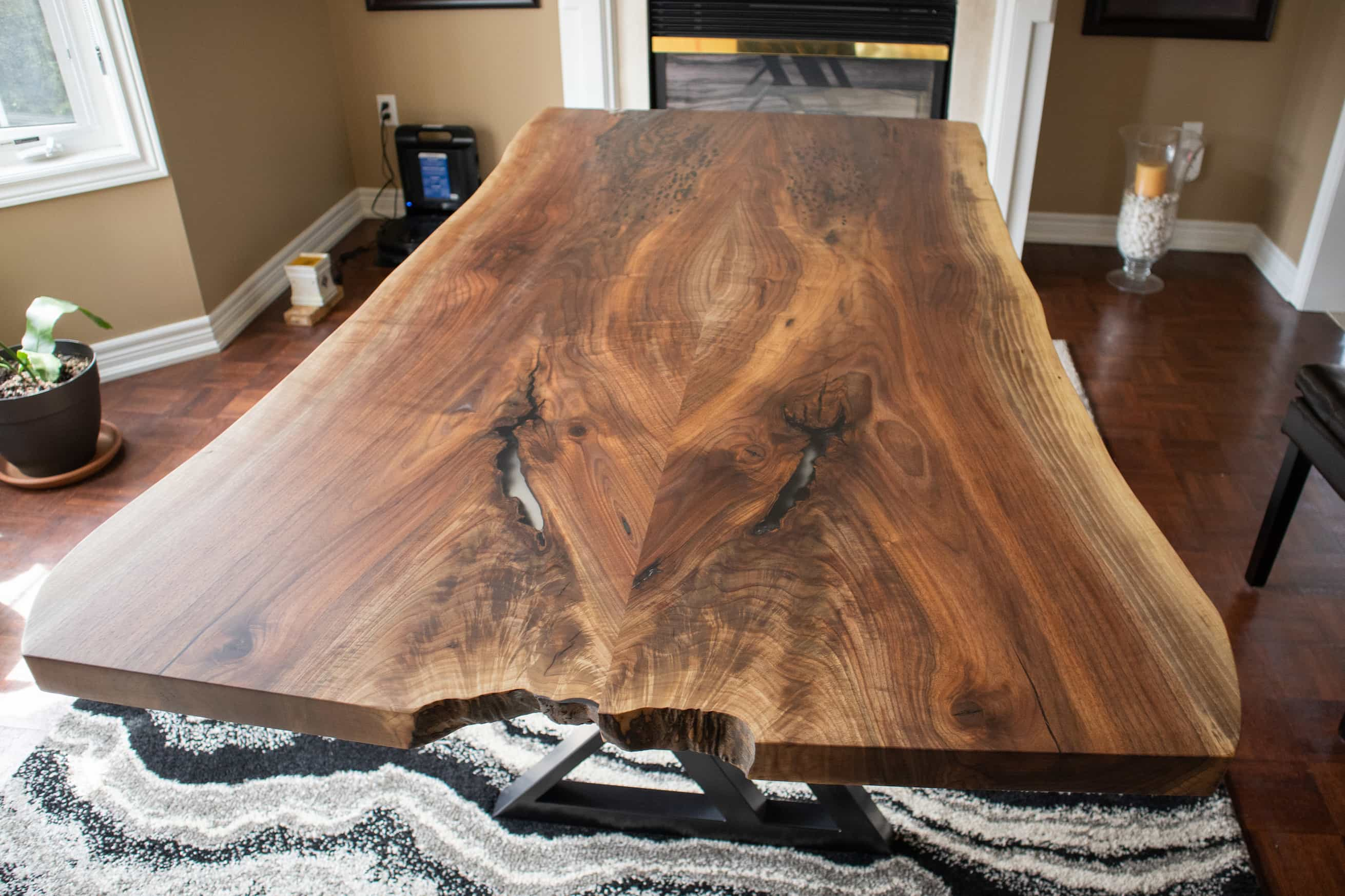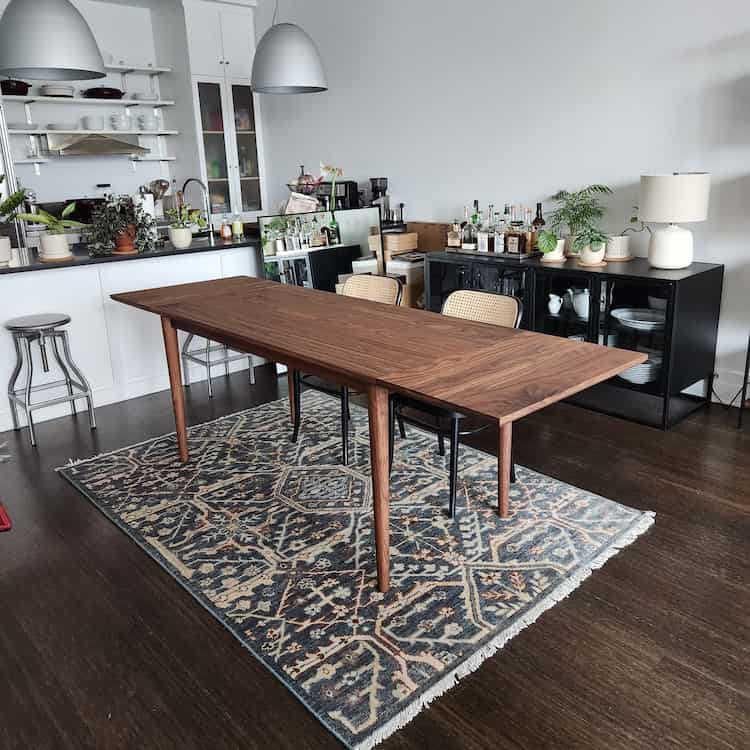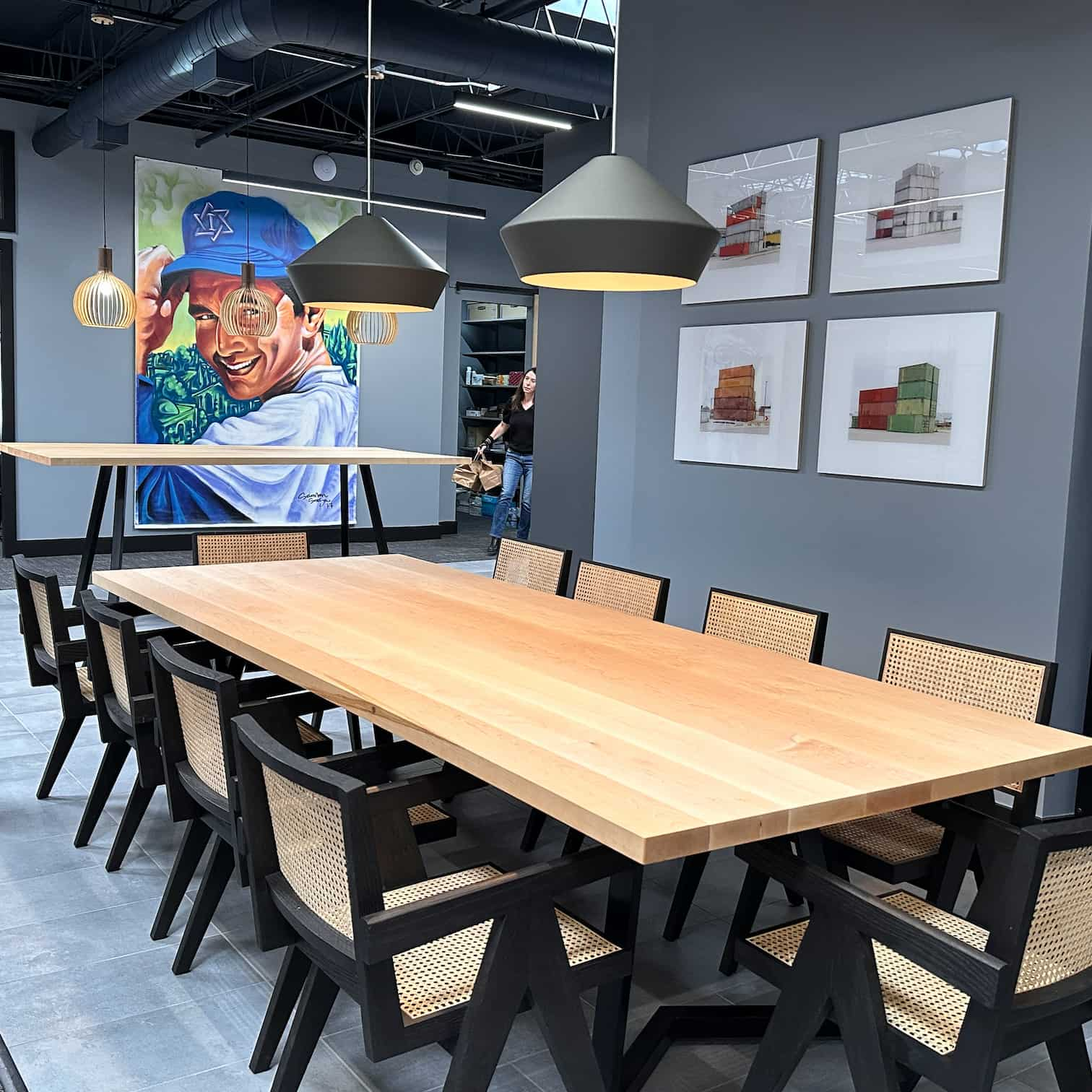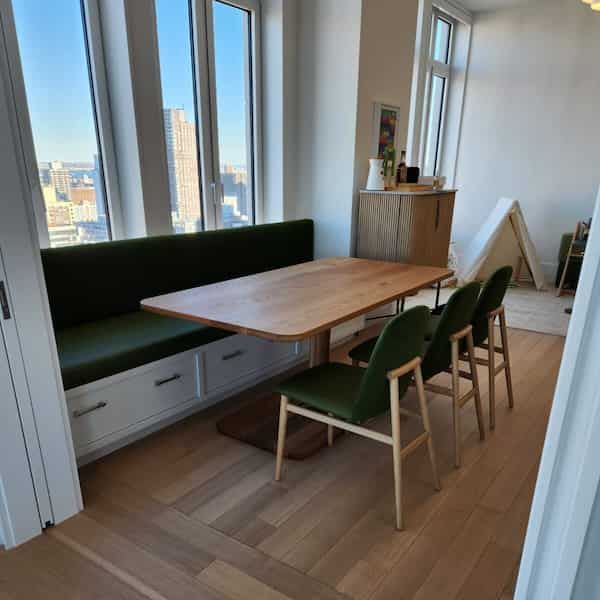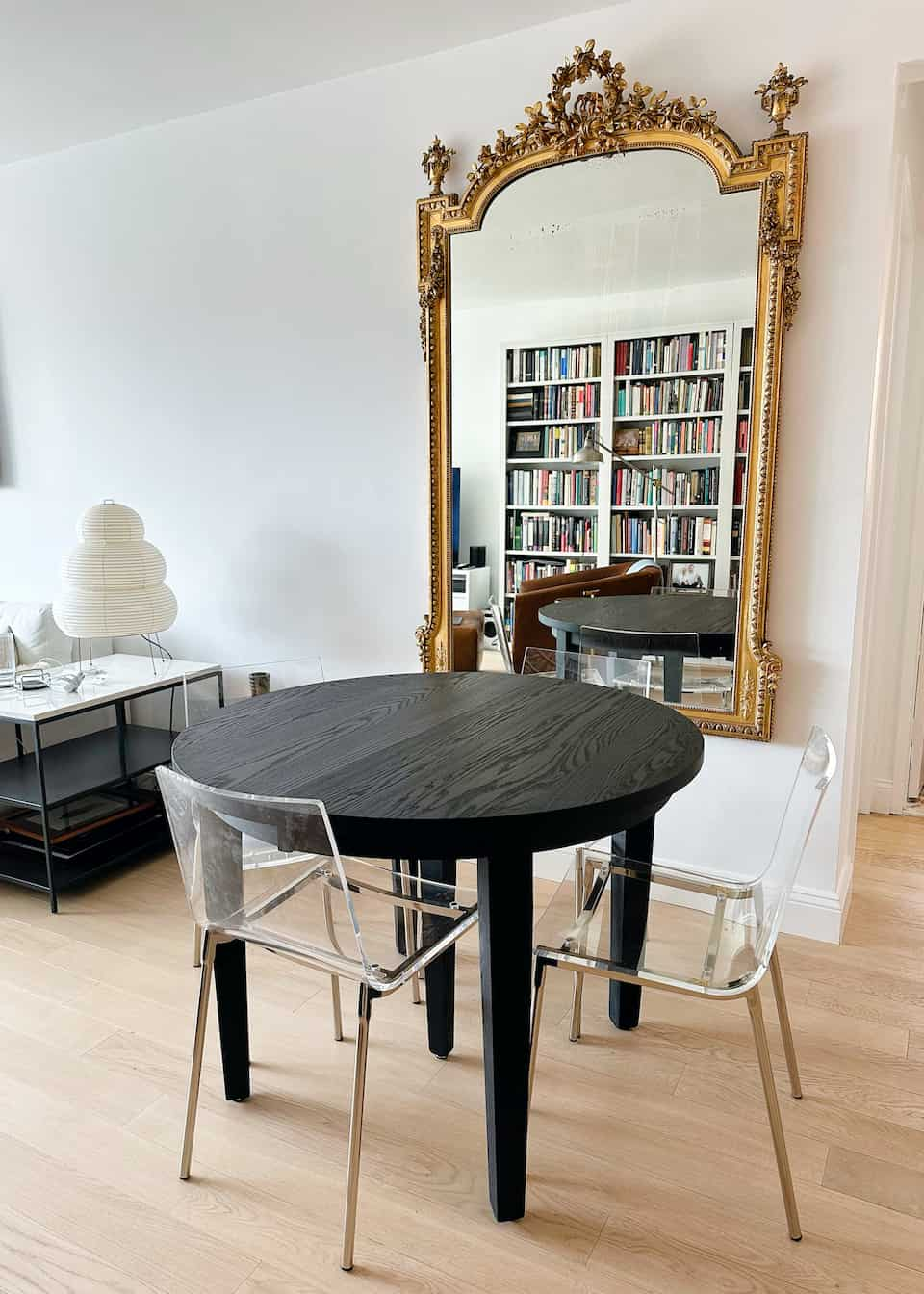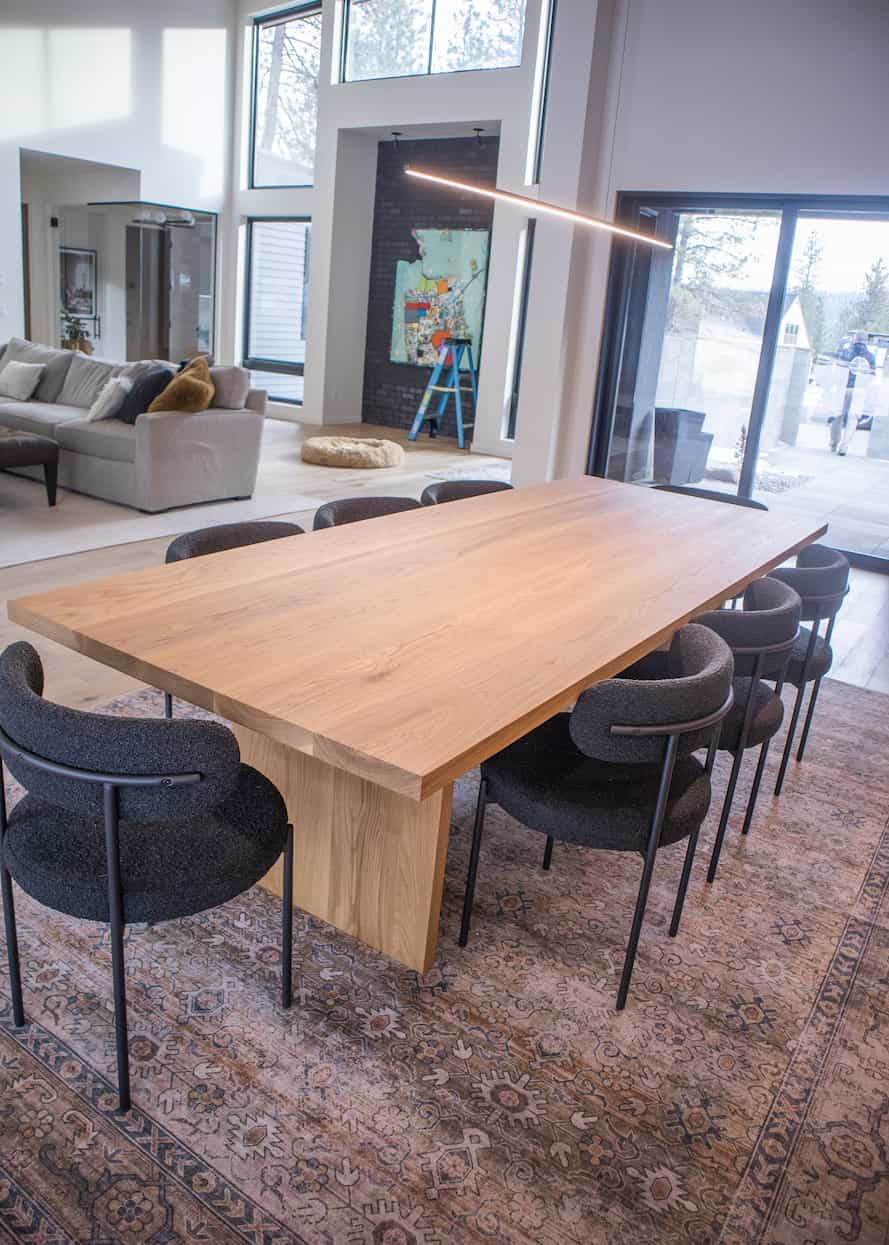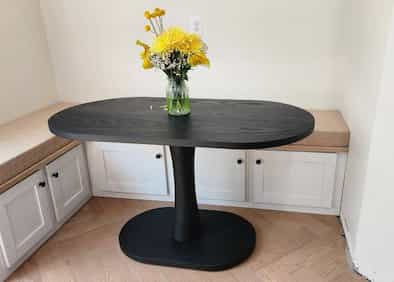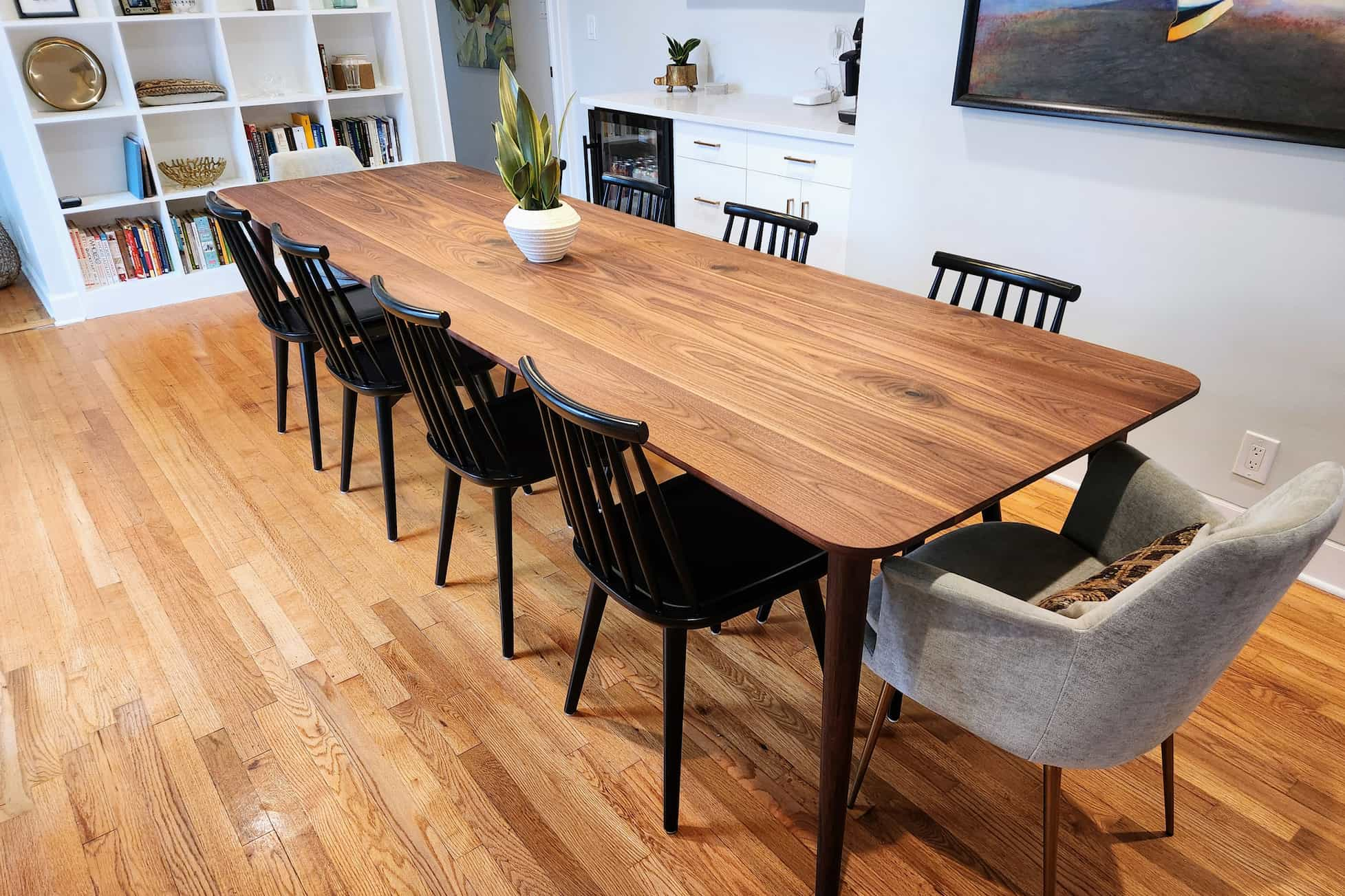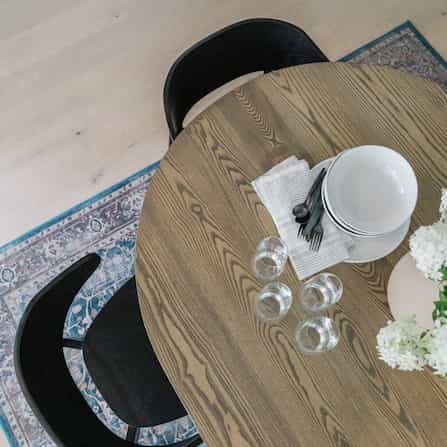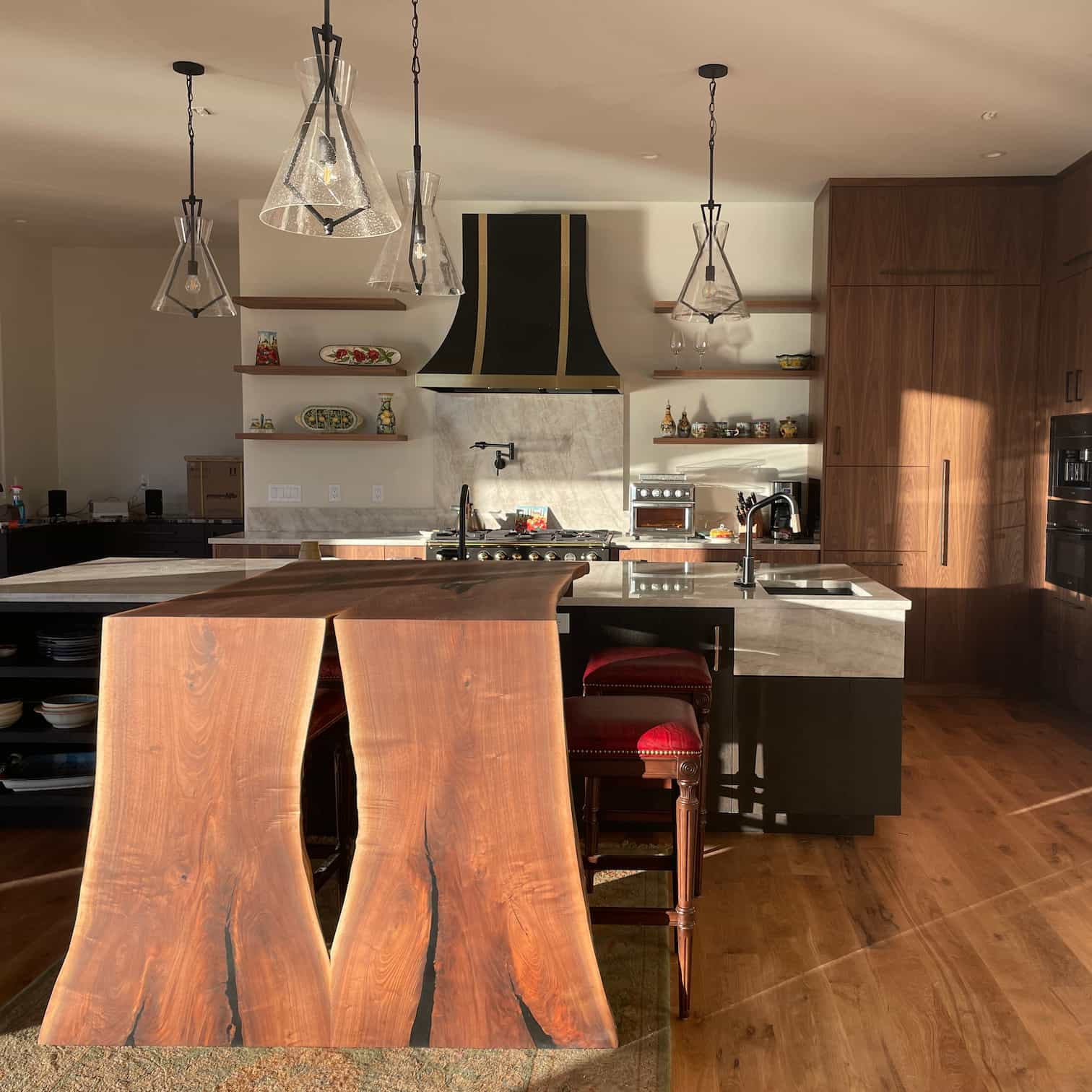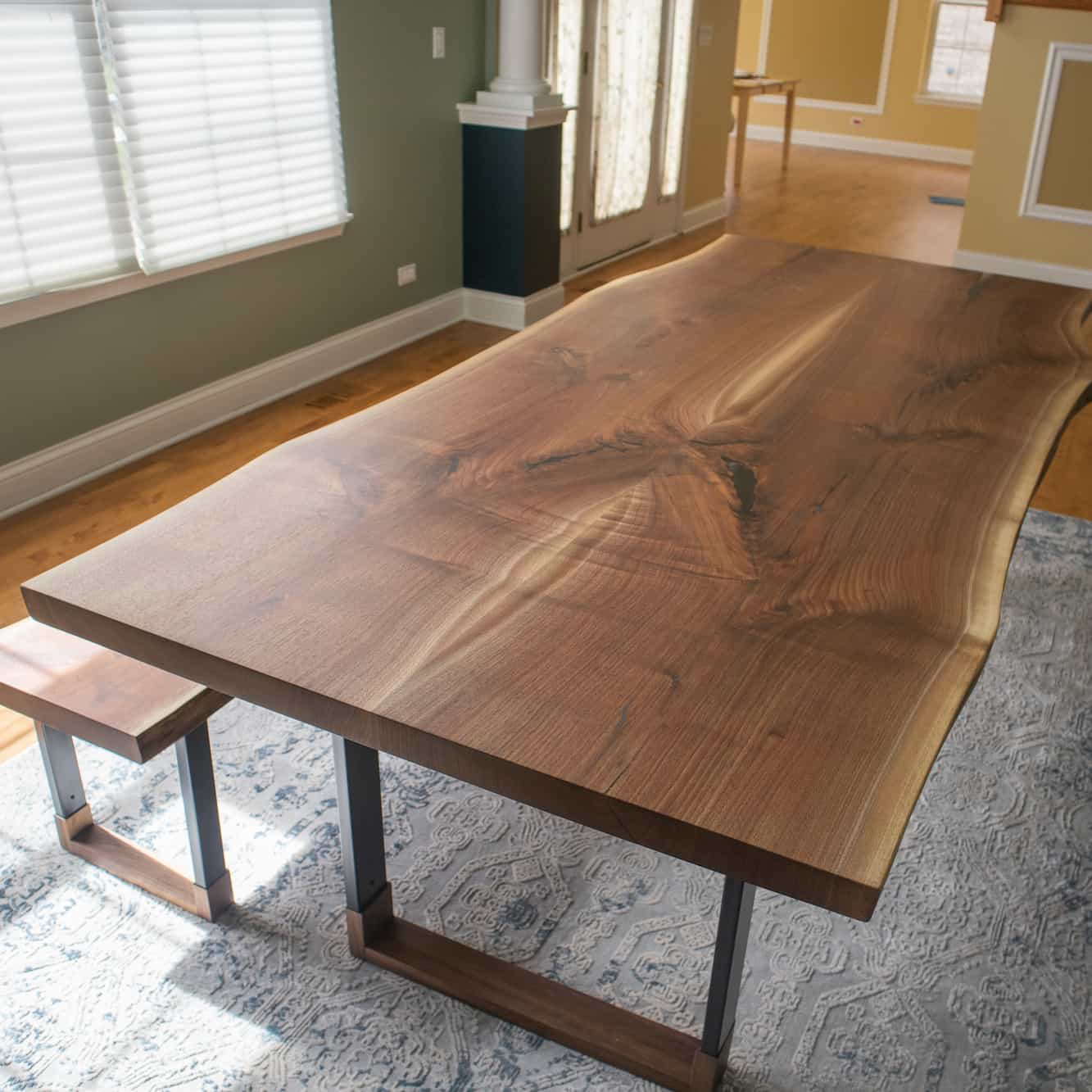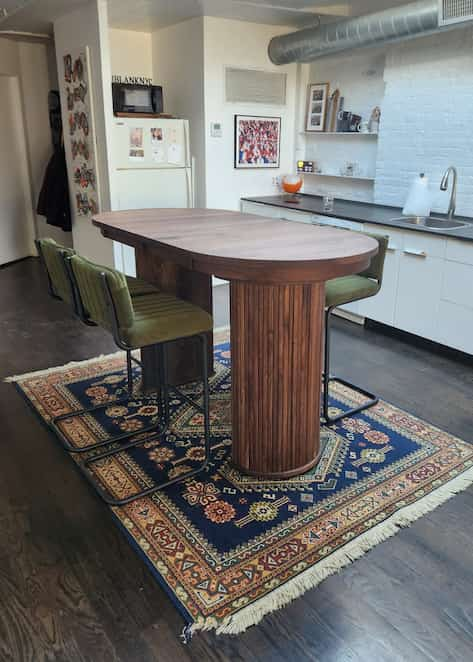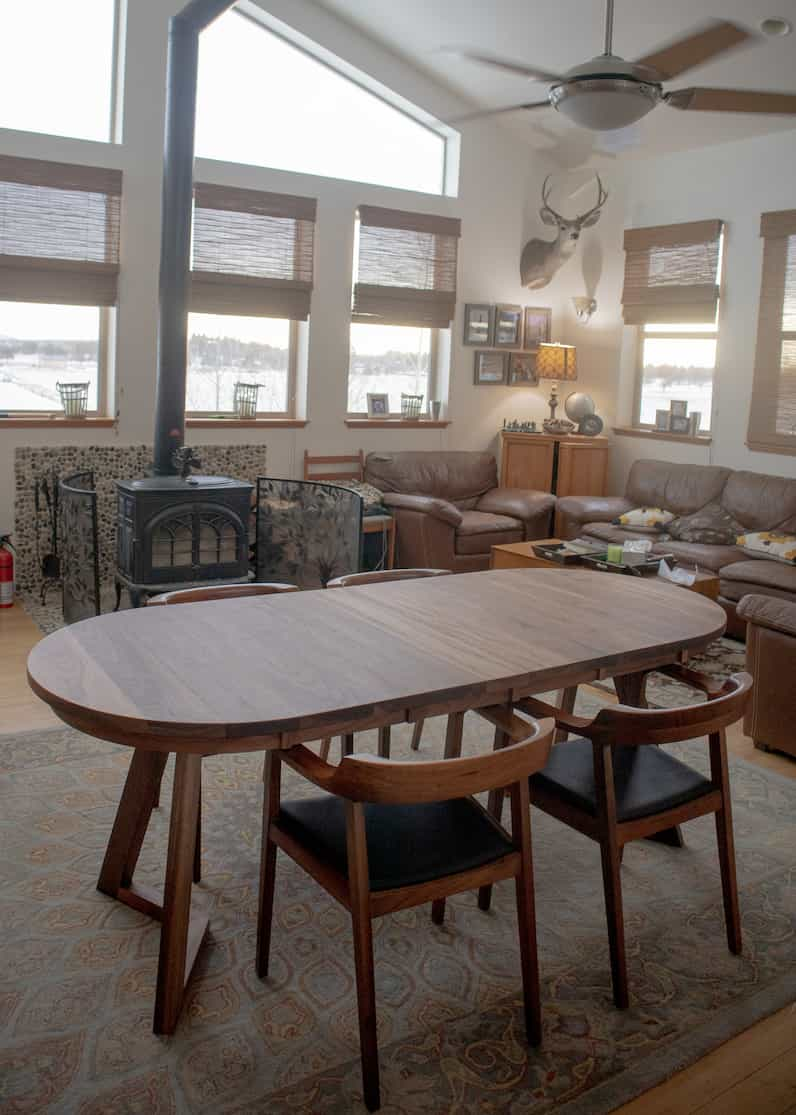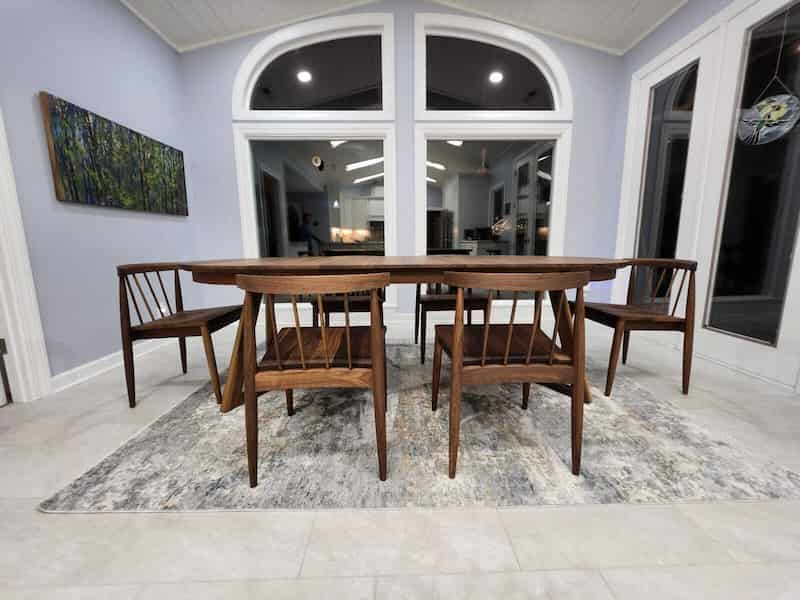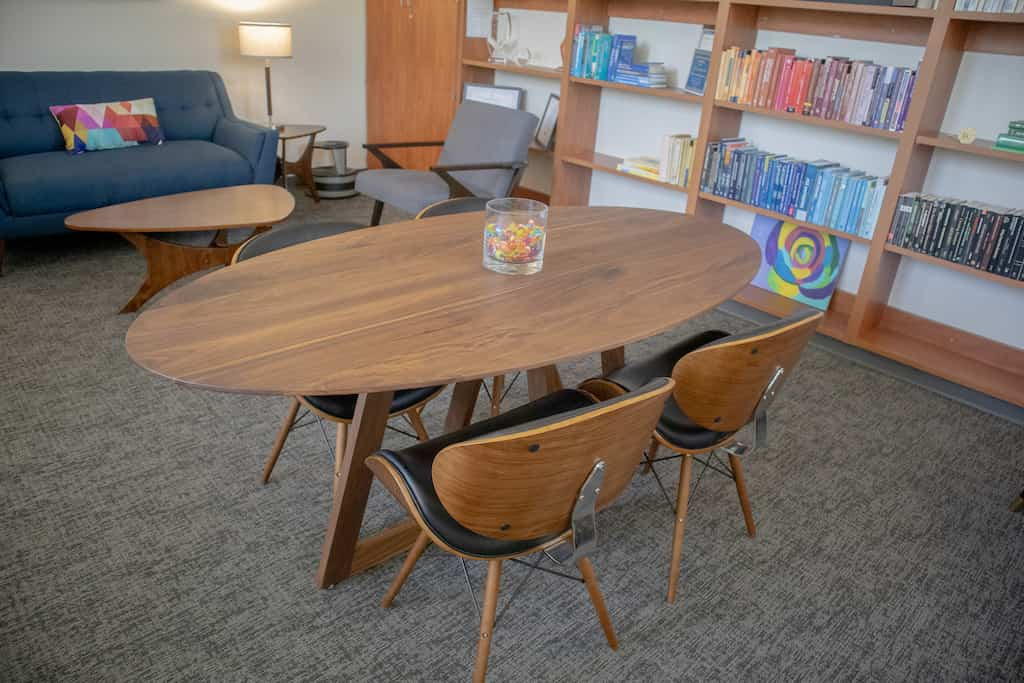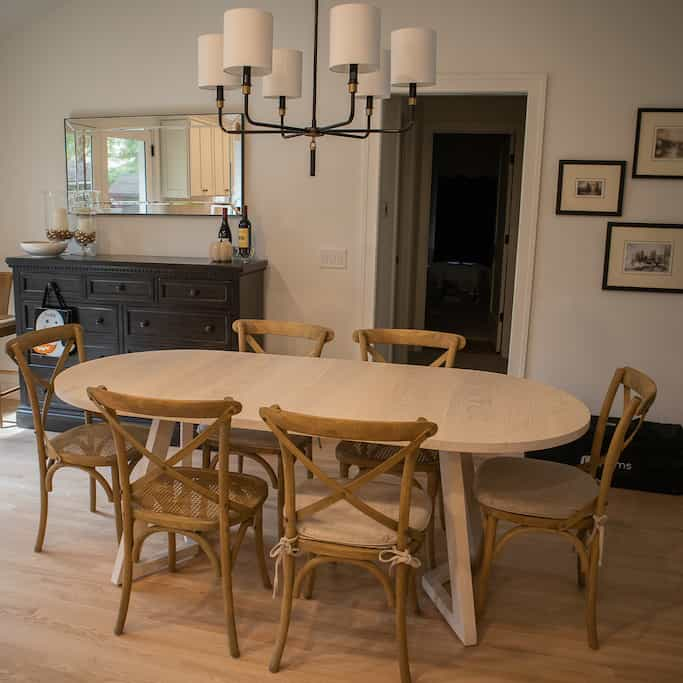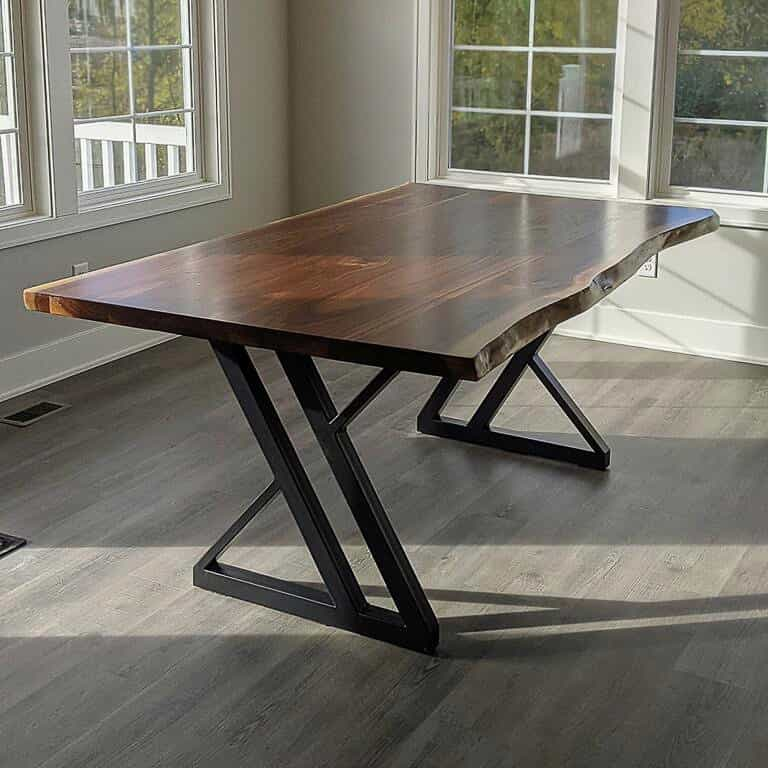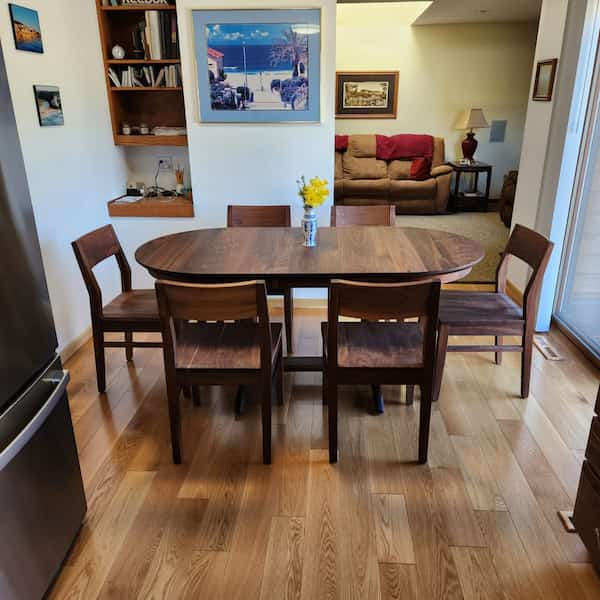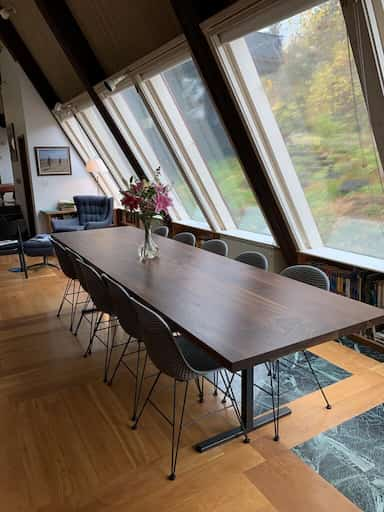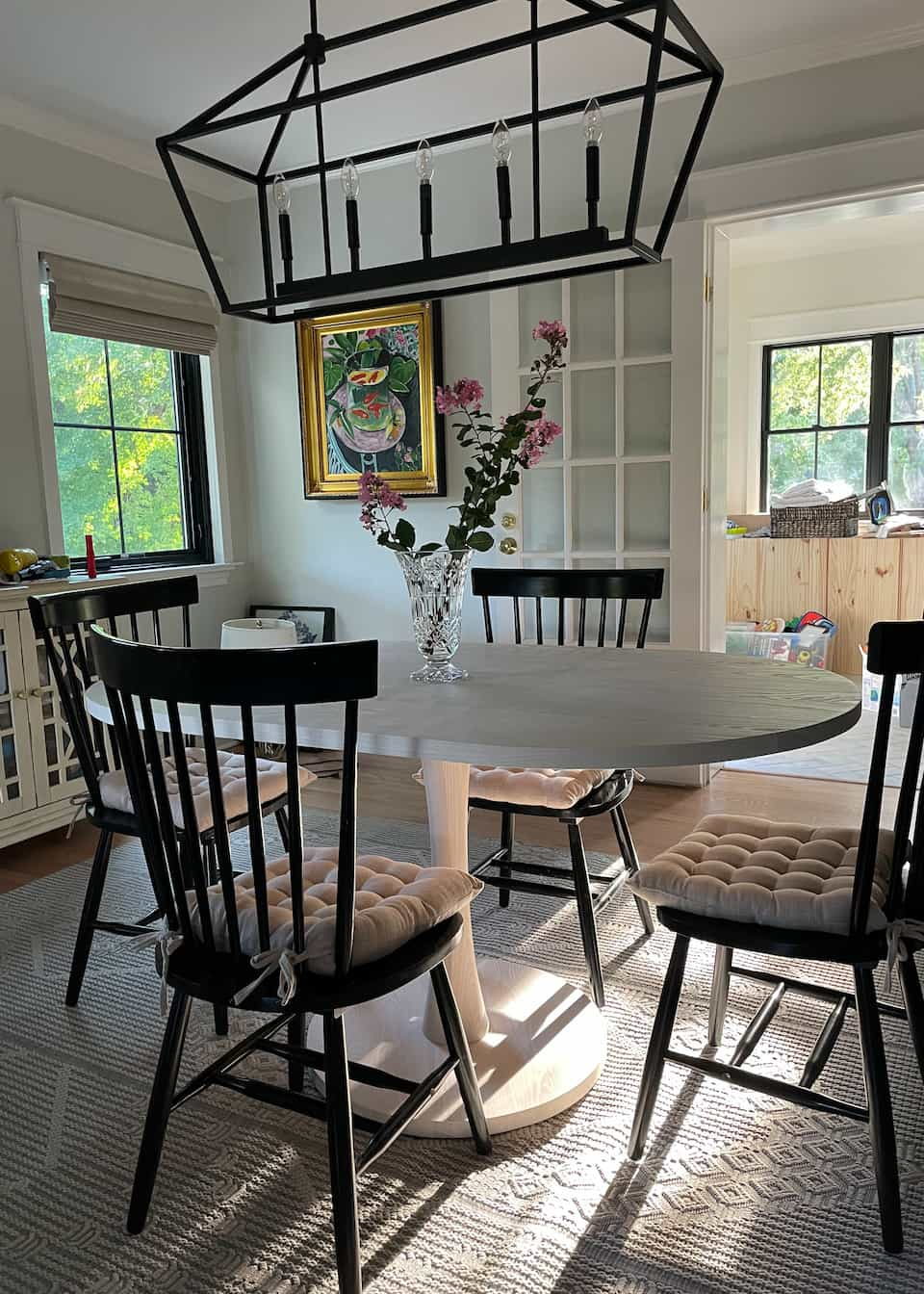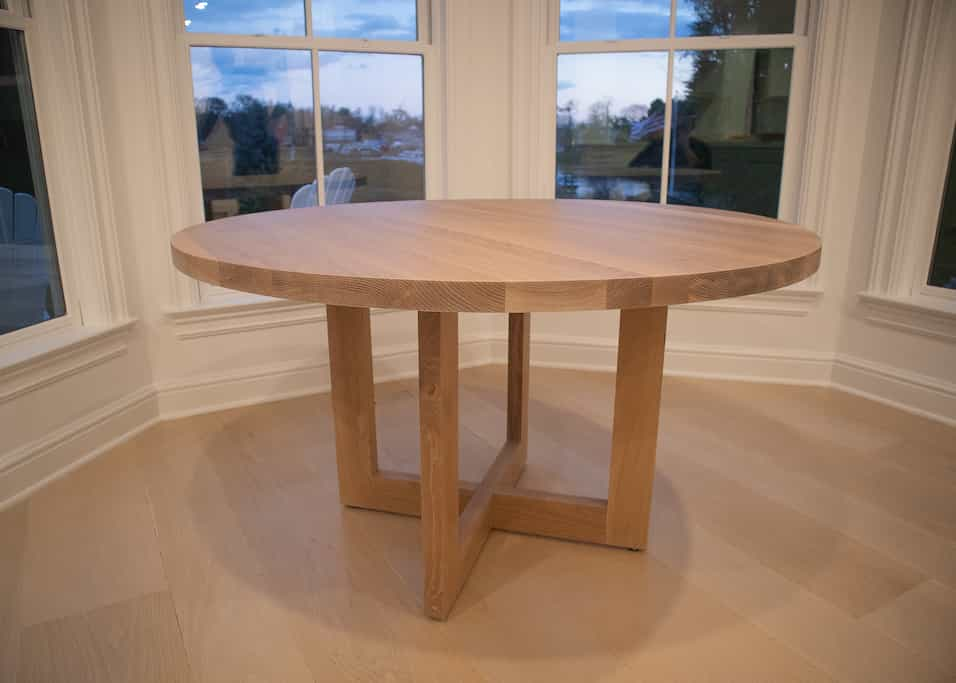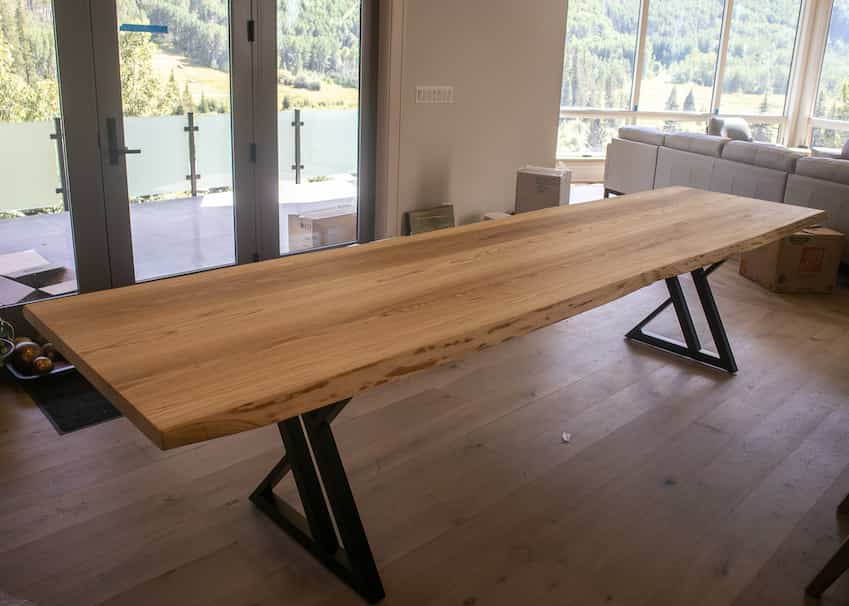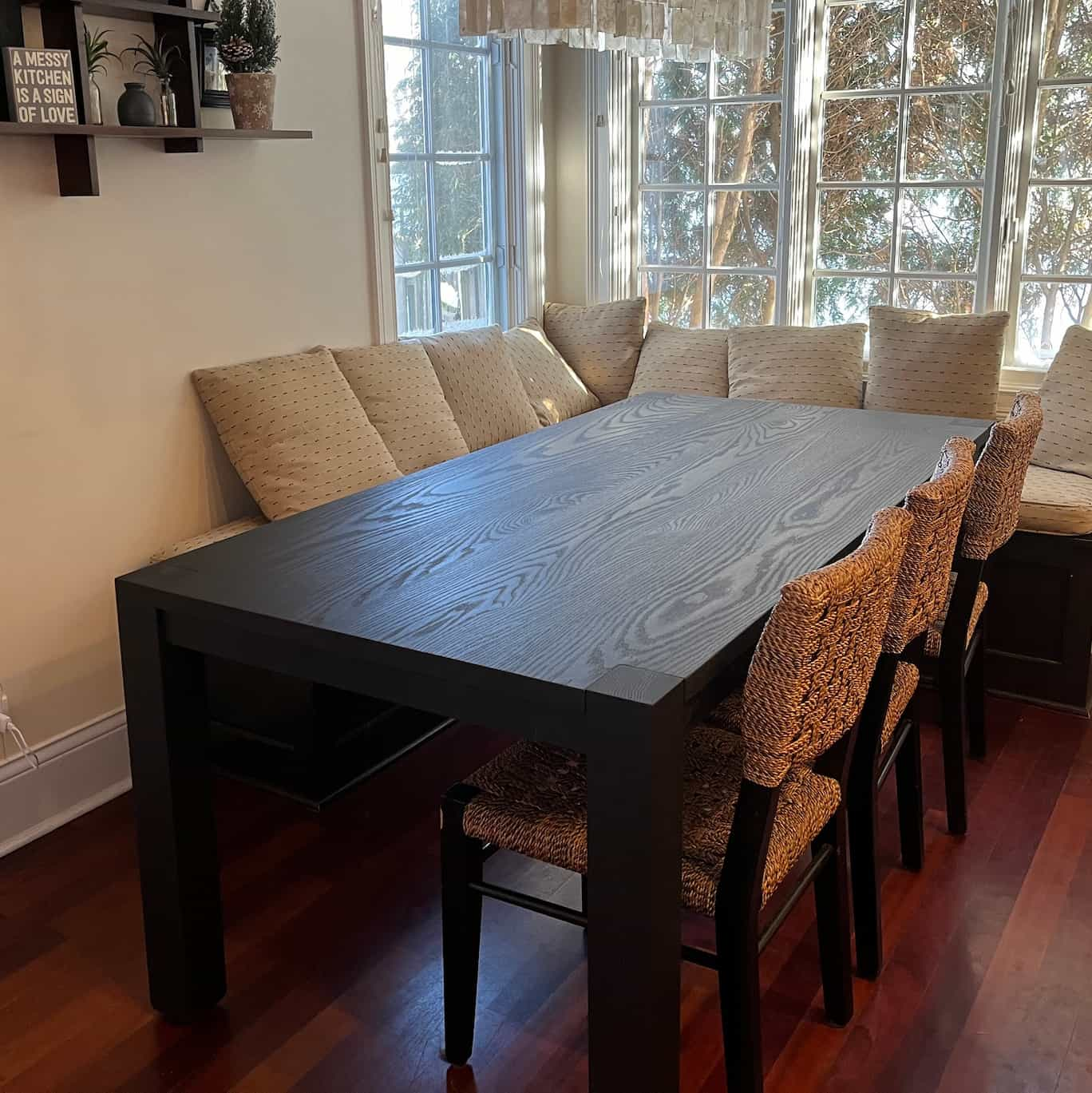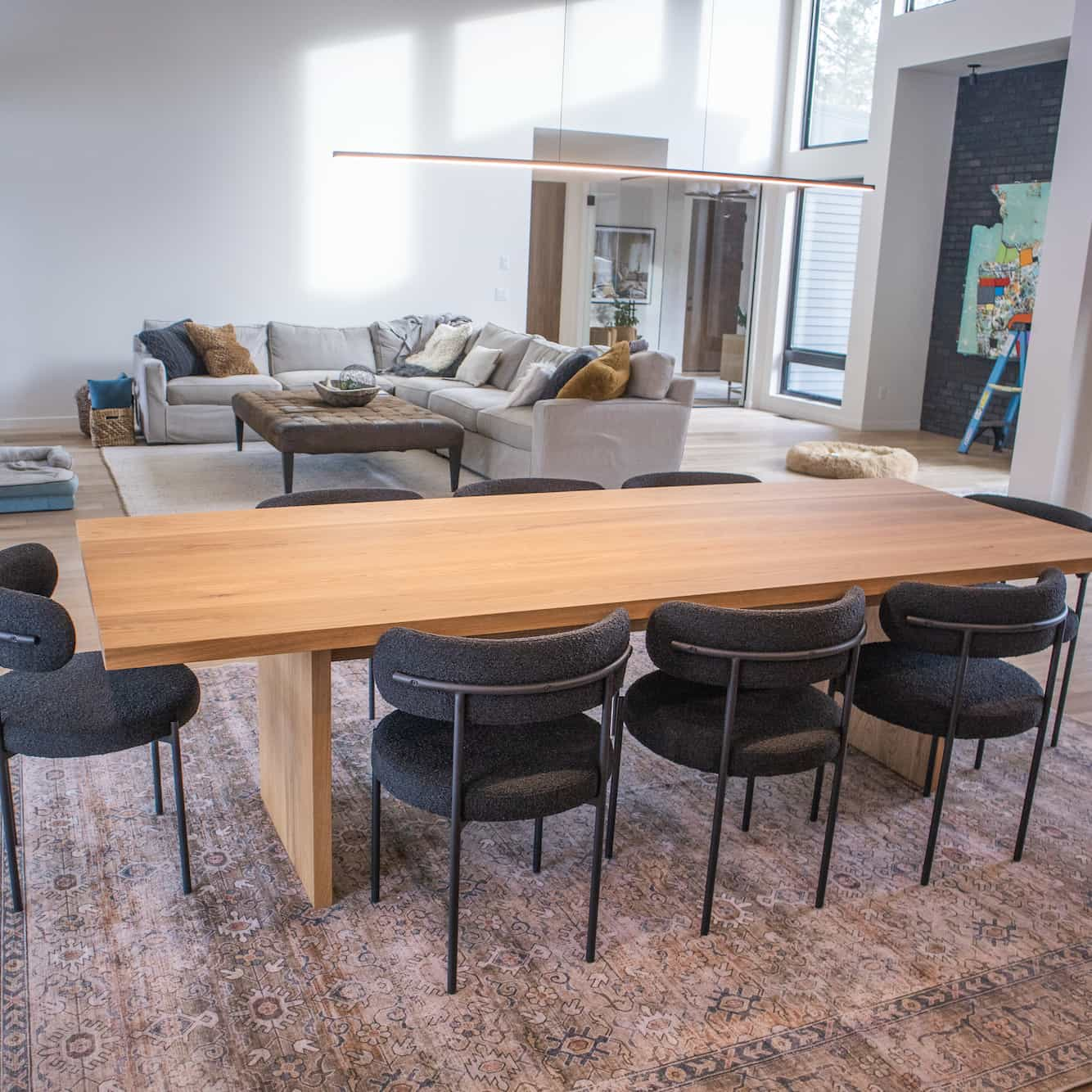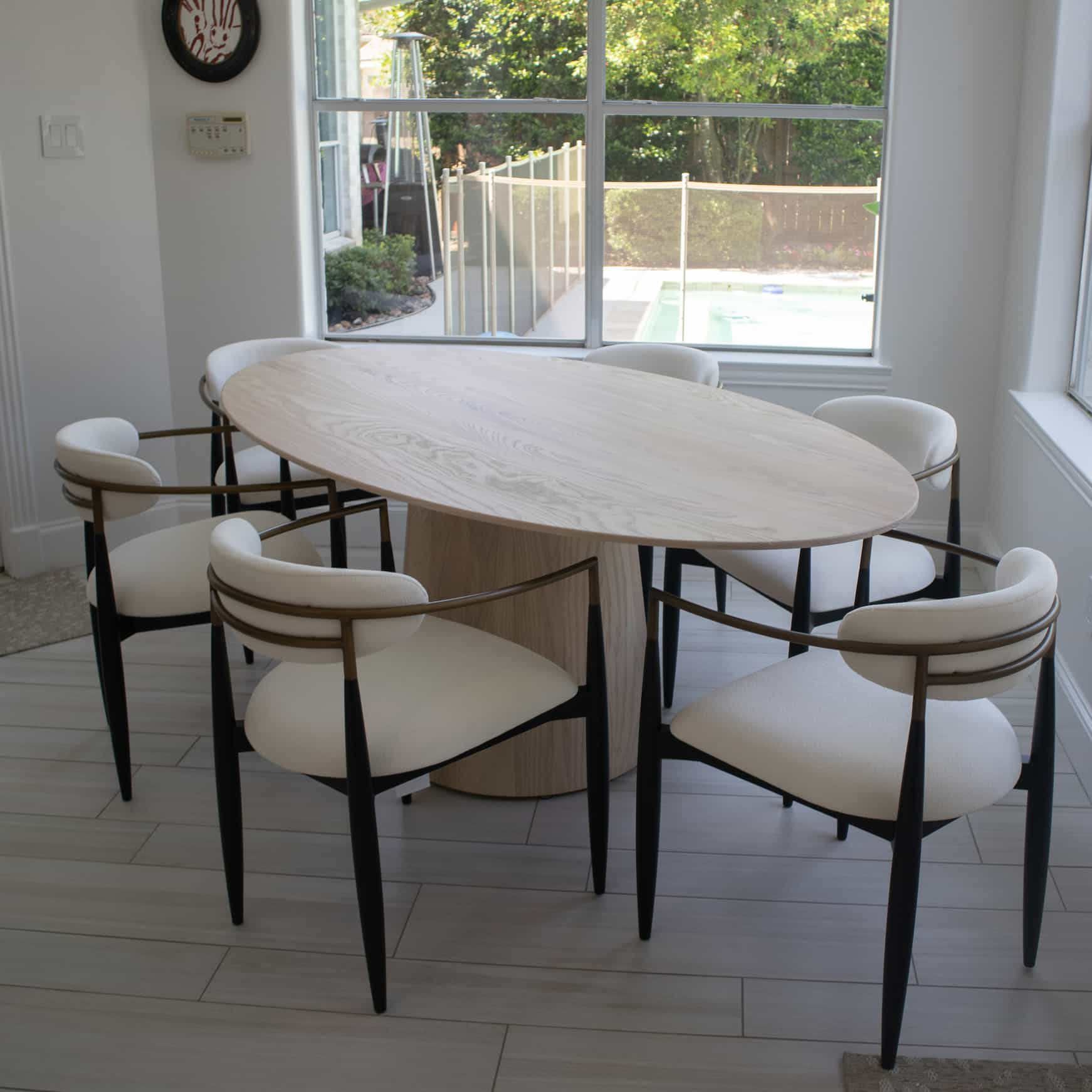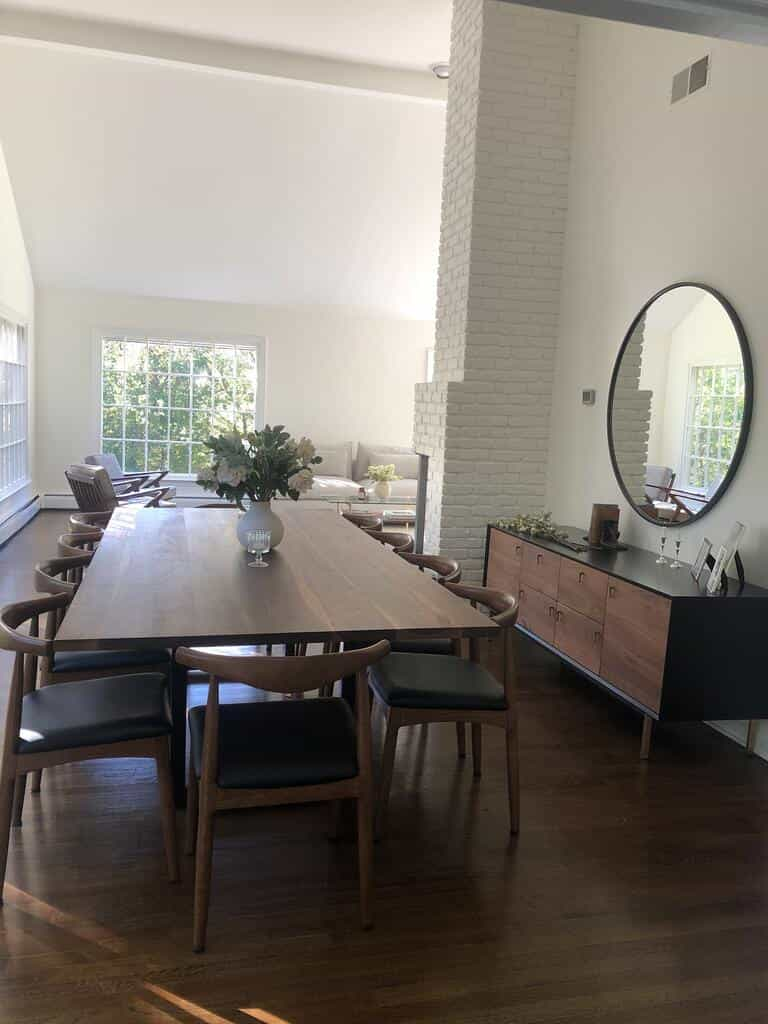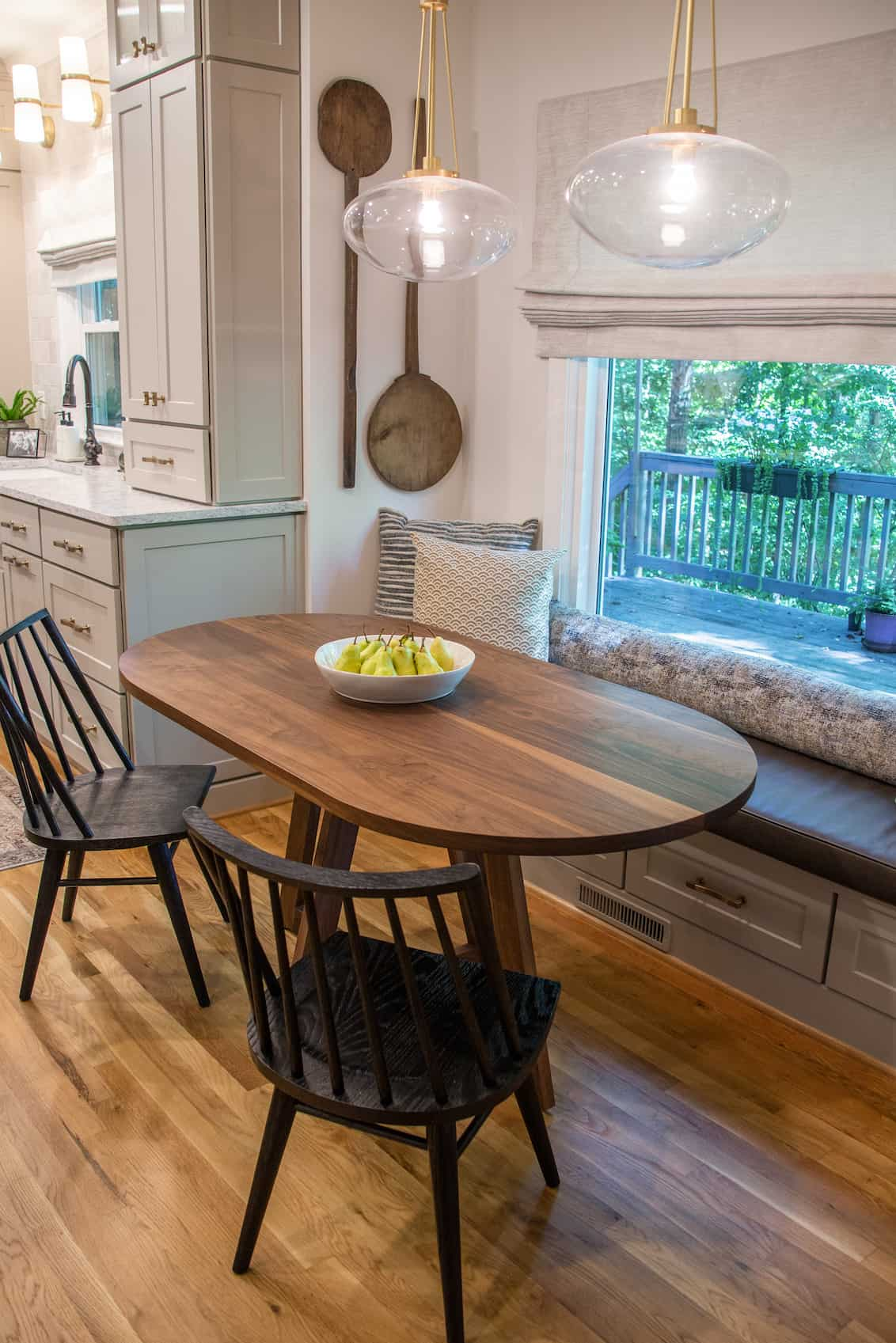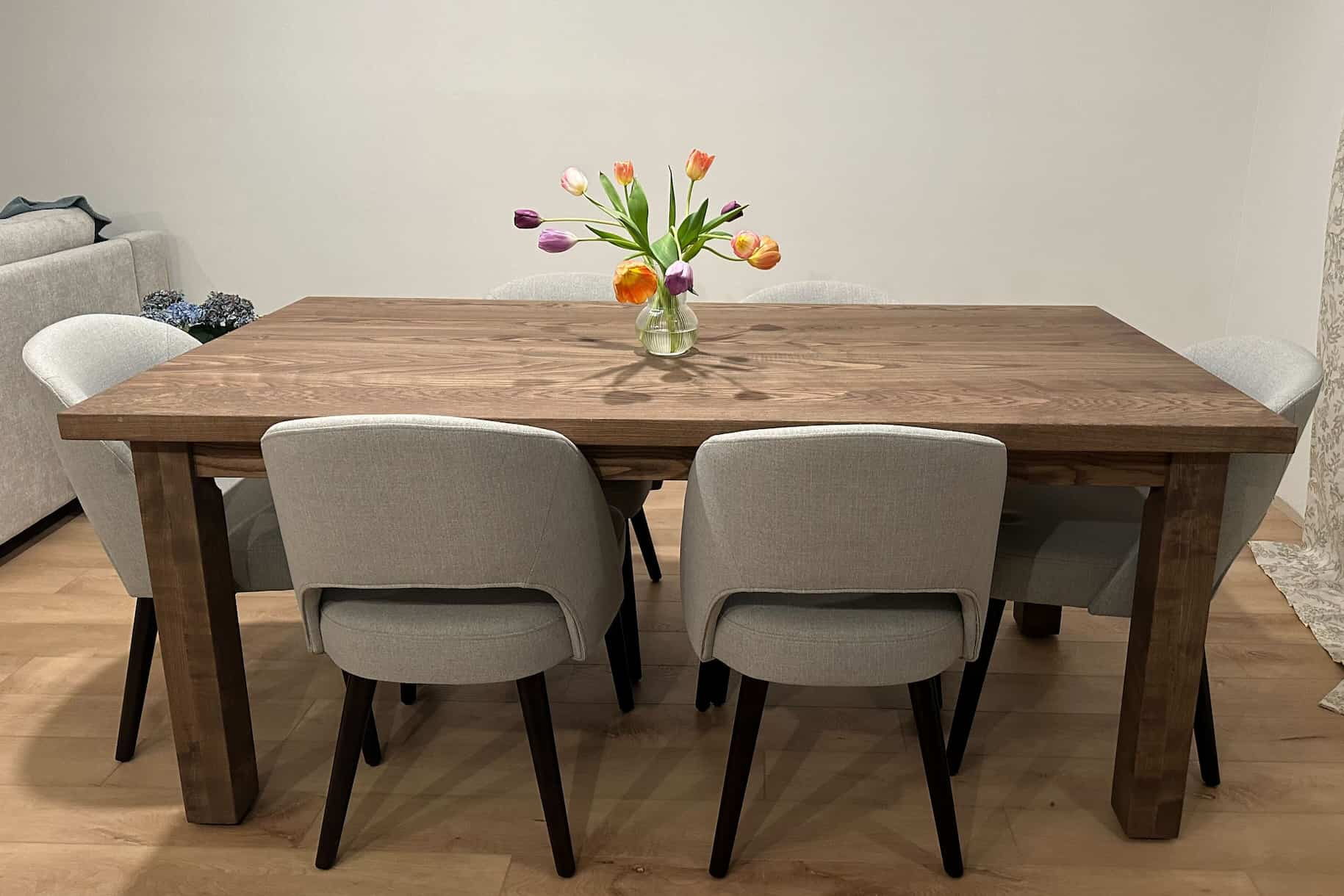| If I was to give you a simple answer I would say any table in our Jarvis collection. It was literally made for this purpose. But it does depend on your specific space, and specific needs. |
 |
| Hi, my name is Josh Loewen, and I am one of the people who help with table designs. Today I want to talk a little bit about banquette seating for a dining table. |
Hi, my name is Josh Loewen, and I am one of the people who help with table designs. Today I want to talk a little bit about banquette seating for a dining table.
What is Banquette seating?
What I mean when I say banquette seating is any built in bench seating with a dining table adjacent to it. Basically if you’re sitting at a table on a bench and the bench can’t move then I’d say that’s banquette seating. (Unless the bench is attached to the table like a picnic table. I’d call that a picnic table.) If the bench moves, that’s different.
What’s special about Banquette seating?
A great thing about banquette seating is how well it uses space. With a more traditional set up with chairs around a table you need space to walk around the table. With a banquette that’s not necessary.
While not needing the walking space can be excellent for your floor plan, it does have some other effects. One thing that makes banquette seating so unique is that you are forced to slide along the table to get to the seats. This is especially true with benches around a corner or in a ‘U’ shape. This should be considered if you have loved ones who can not easily slide around a table.
How does Banquette seating affect my choice of table?
The most significant impacts are, in order, the base, the shape, and the edge. I’ll talk about them all separately.
TABLE BASE
| I like to think of table bases in 4 categories, Parsons, Two Legs or Sled Legs, Trestles, and Pedestals. Then I order them based on how close or far from the corners the base is. The closest to the corners is Parsons, the furthest Pedestals. |  |
When you have to slide around a table to get to your spot, the base can get in the way. The further in the base is, the easier it will be to slide past. A slim pedestal post, like the Jennings base featured in our Jarvis Collection, is excellent for this. It makes plenty of room for people to slide right on by without bumping knees. Another good base for this could be the Bidwell, which is similar but made from steel. If you wanted to move away from a pedestal, legs that stay as close to the middle of the table will still serve best. The Tuttle legs, or as a trestle, the Yoder would also come to mind.
 |
 |
 |
TABLE SHAPE
This will matter more or less depending on the shape of the banquette. Specifically if you have to slide around a corner or not. If the bench is only along one side, then it shouldn’t be too much trouble regardless. If there’s a need to slide past a corner, then that corner matters a lot! A racetrack oval shape would be my personal recommendation for this, as it is always very easy to move around. But again, it depends on the shape of your space.
This is a banquette space by a bay window and the bench follows the shape of the window. We built this table to be an elliptical oval table for this space, and it worked out perfectly!
Rectangles can sometimes be a great option if you have a corner in your banquette. They allow people to squeeze in as much as they can and everyone will always have table space.
 |
This is a banquette space by a bay window and the bench follows the shape of the window. We built this table to be an elliptical oval table for this space, and it worked out perfectly! |
| Rectangles can sometimes be a great option if you have a corner in your banquette. They allow people to squeeze in as much as they can and everyone will always have table space. |  |
TABLE EDGE
So when I talk about edge I mean both the top and bottom edge of the table, but also the corners of rectangular or square tables. For the sake of this I’ll break them apart. First the corner. For a rectangular table with banquette seating the corner should be eased in some way. This will make it much more comfortable to slide past. I’m personally a big fan of a rounded corner, but a clipped or chamfered corner would do the trick too! As for the top and bottom edge, most anything will do as long as it’s eased as well. Every edge we send out will be at least slightly eased, so there’s no sharp edges. That being said, a little edge won’t hurt especially if you have to slide along it every day. The only edge I would recommend against is a live edge. The inconsistency that makes this natural edge so beautiful can also make it more difficult to slide past! So all in all, my top recommendation would be our Astoria edge. But! depending on your style, you can do most any edge you want.
So why did you recommend the Jarvis Collection? And when would you recommend something else?
I recommend the Jarvis collection for this sort of situation because for me it checks all the most important boxes. It has a slim pedestal that makes it easy to move past. Check It’s most often made with a Seymour, Finlay, or Astoria edge, which are all nice to slide along. Check. It can be made into whichever shape suits your space. Check. With the base made to match the shape of the table top it will always fit well into the space, and sliding past it will always be easy. You won’t need to move the table out a little while everyone’s sitting down. I’d also recommend it for a banquette because we designed it for banquettes. We had enough people asking this exact question that we thought we should figure out a good solution, and I think we did a pretty good job.
I’d be most likely to recommend something else for a banquette with a bench on only one side, or for a very long table. If there’s only a bench on one side then sliding around the corners isn’t necessary. In this case any sort of T shaped leg or trestle will do very well in that sort of situation. So then it all comes down to taste.
As always, if you have any more questions unanswered about banquette seating we’re happy to chat with you about them! We’re also always ready to help you get your table built to make sure you’ve got a solution that’s perfect for you!

